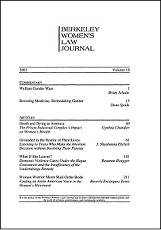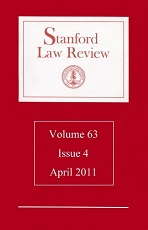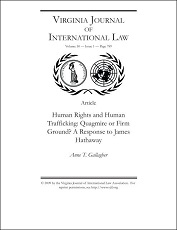Monica Sloboda

Extract
Conclusion
The trend of hospital mergers between religious and non-religious hospitals may continue to threaten access to reproductive health services, especially for patients who already have limited access because they live in rural areas or have low incomes.l” However, as this essay suggests, there are several avenues that concerned citizens and activists can take to try to prevent the loss of these vital services.l ” The creativity and determination of those who commit themselves to ensuring that reproductive health services will continue to be available to all who desire them has resulted in several viable legal and practical methods of intervention. Although I believe it is important to respect the religious rights and beliefs of others. when the expression of these beliefs encroaches on patients’ rights to access basic health services, intervention is appropriate and necessary. I hope that public outcry, in the forms of legal and grassroots action, will persuade state actors, legislatures, hospital administrators, and clergy to properly acknowledge patients’ rights and participate in the creation of acceptable solutions to the financial problems that hospitals increasingly face. We need solutions that do not deny essential health services to any group of people.
Sloboda M. The High Cost of Merging With A Religiously-Controlled Hospital. Berkeley Women’s Law J. 2001 Sep;140-156.





